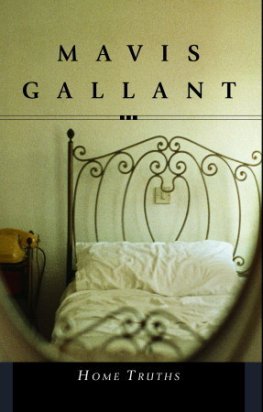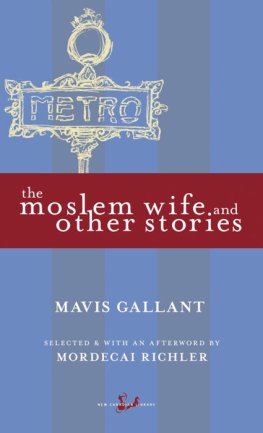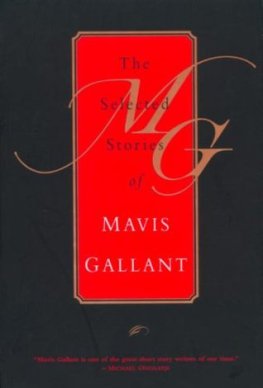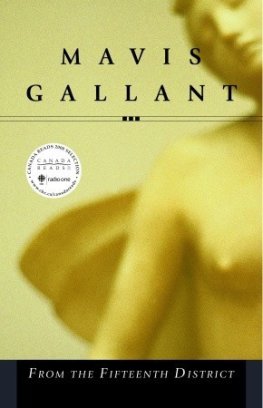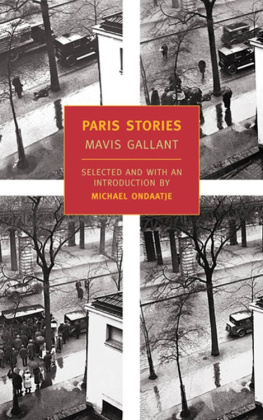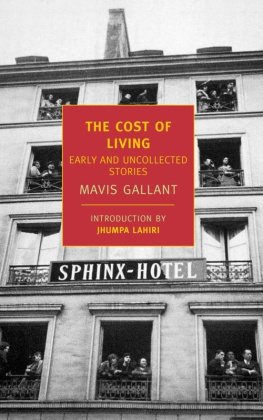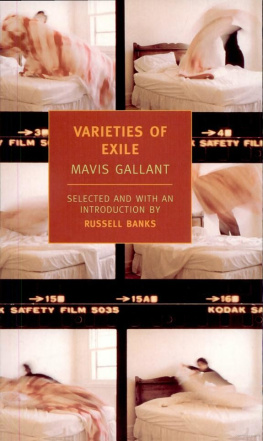Thank You for the Lovely Tea

That year, it began to rain on the twenty-fourth of May a holiday still called, some thirty years after her death, Queen Victorias Birthday. It rained this was Canada until the middle of June. The girls, kept indoors, exercising listlessly in the gym, quarrelled over nothing, and complained of headache. Between showers they walked along spongy gravel paths, knocking against spiraea bushes that suddenly spattered them with water and white. It was the last lap of term, the dead period between the end of exams and the start of freedom. Handicrafts and extra art classes were improvised to keep them busy, but it was hopeless; glooming over their desks, they quarrelled, dreamed of summer, wrote plaintive letters home. Their raincoats were suddenly hot and heavy, their long black stockings scratchy and damp.
Life is Hell, Ruth Cook wrote on the lid of a desk, hoping that someone would see it and that there would be a row. It was the slow time of day four oclock. Yawning over a drawing of flowerpots during art class, she looked despairingly out the streaked window and saw Mrs. Holland coming up the walk. Mrs. Holland looked smart, from that distance. Her umbrella was furled. On her head was a small hat, tilted to one side, circled with a feather. She looked smart but smudged, as if paint had spilled over the outline of a drawing. Ruth took her in coldly, leaning on a plump, grubby hand. Mrs. Holland was untidy she had heard people say so. She was emotional. This, too, Ruth had overheard, always said with disapproval. Emotion meant being American; it meant placing yourself unarmed in the hands of the enemy. Emotion meant not getting ones lipstick on straight, a marcel wave coming apart in wild strands. It accounted for Mrs. Hollands anxious blue eyes, for the button missing on a blouse, the odds and ends forever falling out of purse or pocket. Emotion was worse than bad taste; it was calamitous. Ruth had only to look at Mrs. Holland to see what it led to. Mrs. Holland passed up the front steps and out of sight. Ruth went back to her bold lettering: Life is Hell. Any other girl in the room, she thought with satisfaction, would have gone importantly up to the desk and whispered that a lady had come to take her to tea, and could she please go and get ready now? But Ruth knew that things happened in their own good time. She looked at her drawing, admired it, and added more flowerpots, diminishing to a fixed point at the center of the page.
Well done, said Miss Fischer, the art teacher, falsely, strolling between the ranks of desks. If she saw Life is Hell, she failed to comment. They were all cowards; there was no one to fight. Your horizon line is too low, said Miss Fischer. Look at the blackboard; see how I have shown Proportion.
Indicating patience and self-control, Ruth looked at the blackboard, over it, around it. The blackboard was filled with receding lines, the lesson having dealt with Perspective as well as Proportion. Over it hung a photograph of the King the late King, that is. He had died that year, and so had Kipling (although far less fuss was made about him), and the girls had to get used to calling Kipling our late beloved poet and the Prince of Wales King Edward. It was hopeless where the Prince was concerned, for there hung the real King still, with his stiff, elegant Queen by his side. He had died on a cold January day. They had prayed for him in chapel. His picture was in their prayer books because he was head of the Church something like that. It is a year of change, the headmistress had said, announcing his death.
Its a year of change, all right, Ruth said softly, imitating the headmistresss English accent. Even the term headmistress was new; the old girl, who had retired to a cottage and a faithful spinster friend, had been content with principal. But the new one, blond, breathless, pink-cheeked, was fresh from England, full of notions, and felt that the place wanted stirring up. Im afraid I am progress-minded, she told the stone-faced, wary girls. We must learn never to fear change, provided it is for the best. But they did fear it; they were shocked when the tinted image of George V was taken down from the dining-room wall and the famous picture of the Prince of Wales inspecting the front during the Great War put in its place. The Prince in the photo was a handsome boy, blond, fresh, pink-cheeked much like the new headmistress, in fact. A year of change, the headmistress repeated, as if to impress it forever on their minds.
Scrubbing at her flowerpots with artgum, Ruth thought it over and decided there had been no real change. She had never met the King and didnt care for poetry. She was still in school. Her mother had gone to live abroad, but then she had never been around much. The only difference was that her father had met unfortunate Mrs. Holland.
Coming into the flagged entrance hall, Mrs. Holland was daunted by the chilly gloom. She stared at the row of raincoats hanging from pegs, the sombre portraits of businessmen and clergymen on the walls. Governess-trained, she considered herself hopelessly untutored, and attached to the smell of drying coats an atmosphere of learning. Someone came, and went off to fetch the headmistress. Mrs. Holland sat down on a carved bench that looked like a pew. Irreligious but fond of saying she would believe in something if only she could, she gazed with respectful interest at the oil portrait of the schools chief financial rock, a fruit importer who had abandoned Presbyterianism for the Church of England when a sudden rise in wealth and status demanded the change. Although he wore a gay checked suit and looked every inch himself, a smalltown Presbyterian go-getter, Mrs. Holland felt he must, surely, be some sort of Anglican dignitary; his portrait was so much larger than the rest; besides, the hall was so hushed and damp that religion had to come into it somewhere. She recalled a story she had been told that the school had been a Bernardine abbey, transported from England to Canada stone by stone. The lightless corridors, the smell of damp rot emanating from the linen cupboards, the drafts, the cunning Gothic windows with Tudor panes, the dark classrooms and sweating walls, the chill, the cold, the damp, the discomfort, wistfully British, staunchly religious, all suggested this might indeed have been the case. How nice for the girls, Mrs. Holland thought, vaguely but sincerely.
In point of fact, the school had never been an abbey. Each of its clammy stones had been quarried in North America, and the architectural ragout was deliberate; it was intended to provide the pupils with character and background otherwise lacking in a new continent. As for the fruit importer, the size of his portrait had to do only with the size of his endowment. The endowment had been enormous; the school was so superlatively uncomfortable that it cost a fortune to run. The fruit importers family had been still were exceedingly annoyed. They wished he would take up golf and quit meddling in church affairs. He could not help meddling. Presbyterianism had left its scar. Still, he felt uneasy, he was bound to admit, if there were nuns about, or too much incense. Hence his only injunction, most difficult to follow: The school should be neither too High nor too Low. Every regime had interpreted this differently. The retiring principal, to avoid the vulgarity of being Low, had brought in candles and Evensong. The new headmistress, for her part, found things disturbingly High, almost Romish. The white veils the girls wore to chapel distressed her. They were so long that they made the girls look like Carmelite nuns, at least from the waist up. From the waist down, they looked like circus riders, with their black-stockinged legs exposed to garter level. The pleated serge tunics were worn so short, in fact, that the older girls, plump with adolescence, could not sit down without baring a pink inch between tunic and stocking top. The modernism she had threatened took form. She issued an order: lengthen the tunics, shorten the veils. Modernism met with a mulish and unaccountable resistance. Who would have believed that young girls, children of a New World, would so obstinately defend tradition? Modernism, broadmindedness foundered. The headmistress gave up the fight, though not her claim to the qualities in which she took greatest pride.

